Populations of Burrowing Owls in North America are in sharp decline. They are an Endangered Species in Canada where only about 800 pairs remain as there has been a 73% drop in their numbers in that country over the last 30 years. They are a species of “special protection” in Mexico and they are “listed” in 9 of the 18 western states in the U.S. that they still occupy.
The reason for this disastrous decline is not well understood, but “human activity” is strongly suspected. In order to get a better handle on what is happening to them, multiple banding studies are in progress and that includes Antelope Island.
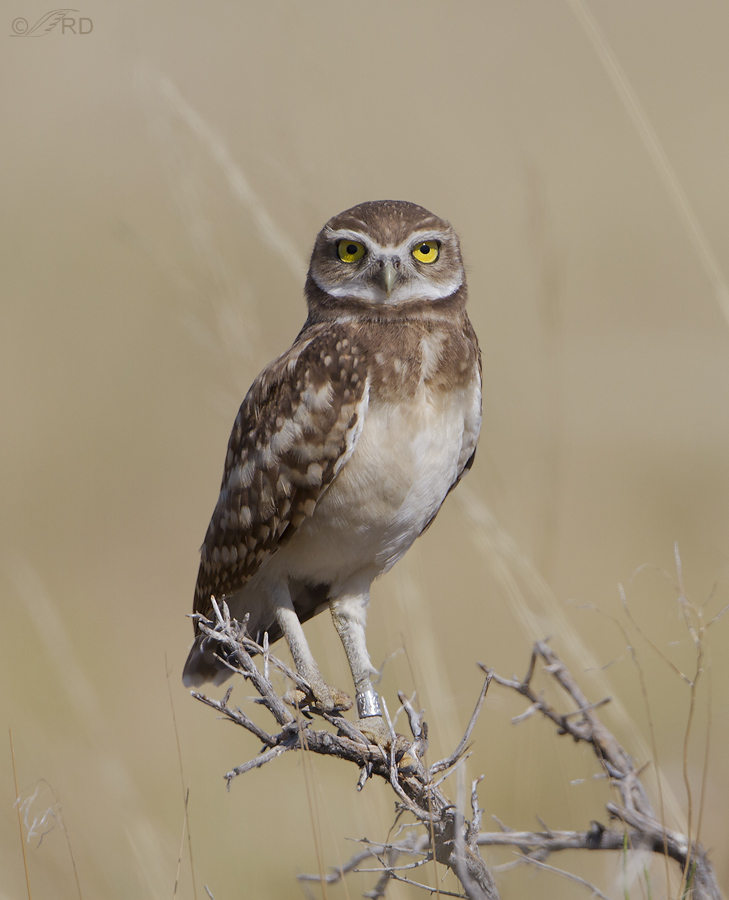
1/2000, f/6.3, ISO 500, 500 f/4, 1.4 tc, natural light, shot from pickup window, not baited, set up or called in
I first noticed banded juvenile Burrowing Owls on the island this past summer. Out of about a dozen juveniles in one area, several of them were banded but it was difficult to get a precise number because they’re hard to tell apart when some are in their burrows and the rest are flying all over the area.
Most of the photos I have of banded owls were taken in early morning light but this one was taken later in the day (as you can tell by the position of the catch light and the angle of the shadows on the eyes), so the light was brighter and harsher.
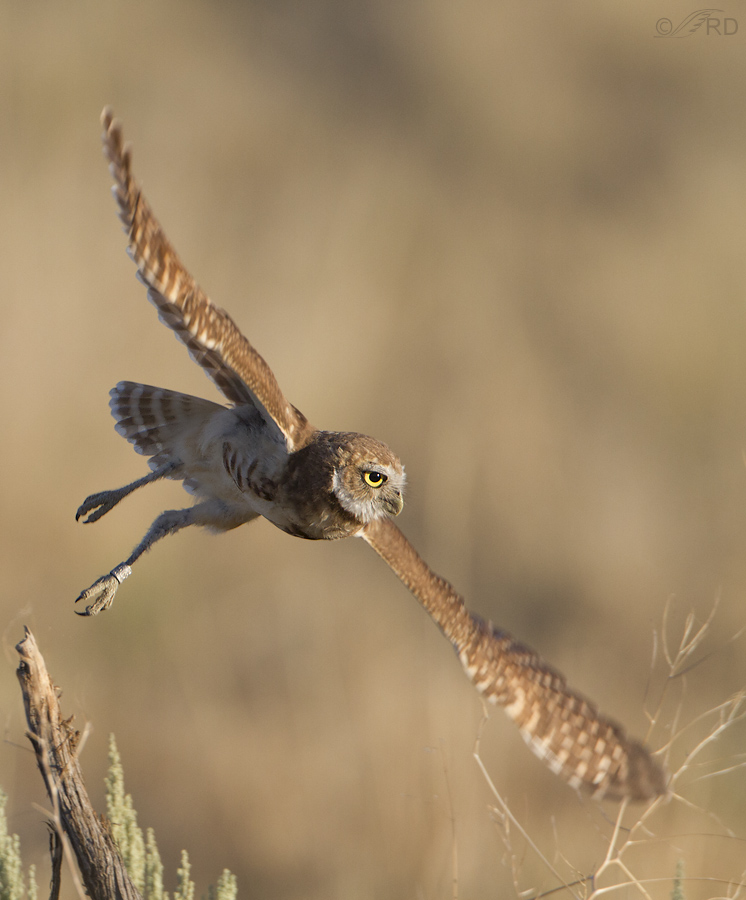 1/1600, f/6.3, ISO 500, 500 f/4, 1.4 tc, natural light, shot from pickup window, not baited, set up or called in
1/1600, f/6.3, ISO 500, 500 f/4, 1.4 tc, natural light, shot from pickup window, not baited, set up or called in
The wings aren’t sharp here but I think the motion blur works well enough since the head and body are sharp. The light on the foot shows off the band well and that’s my purpose with this post.
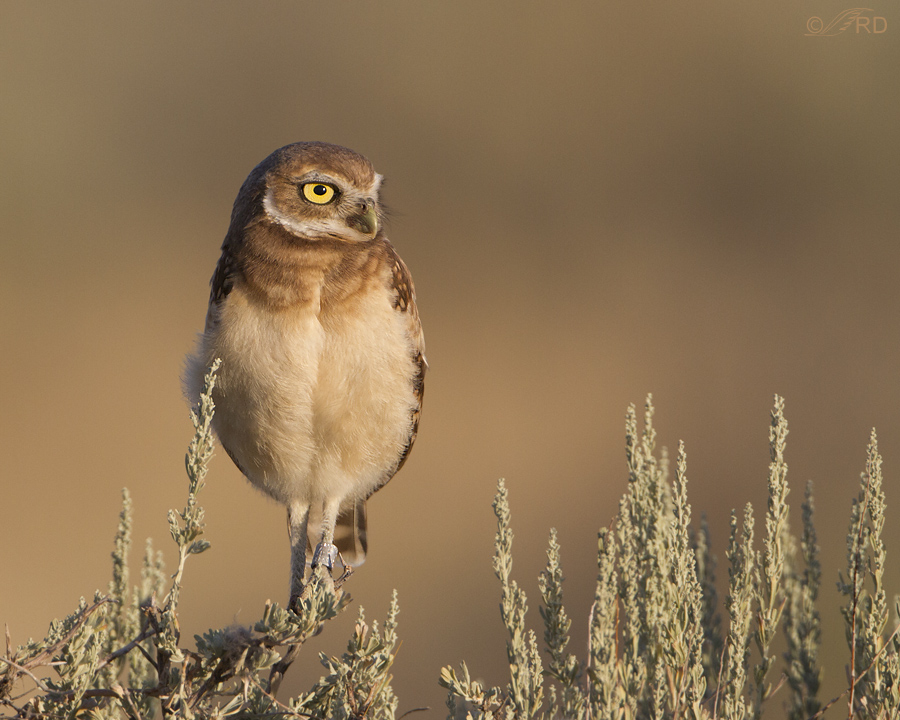
1/2000, f/6.3, ISO 640, 500 f/4, 1.4 tc, natural light, shot from pickup window, not baited, set up or called in
This bird almost seemed like it was trying to show off its “jewelry” by putting the appropriate foot forward.
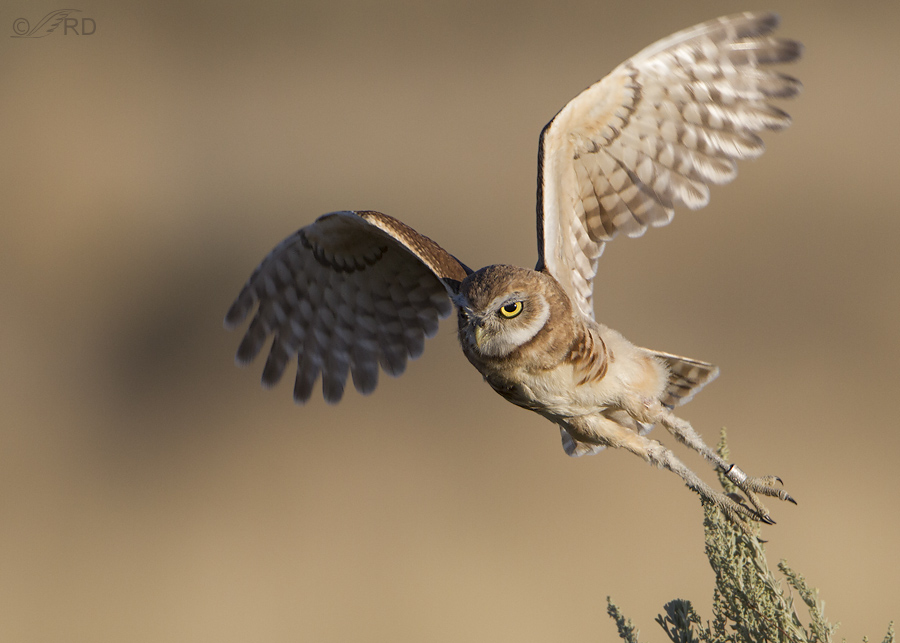
1/2000, f/5.6, ISO 500, 500 f/4, 1.4 tc, natural light, shot from pickup window, not baited, set up or called in
This one had just taken off from the sagebrush in the lower right corner. I wish I’d had more room up top for better composition (perhaps I’ll add some canvas there) but the band shows well.
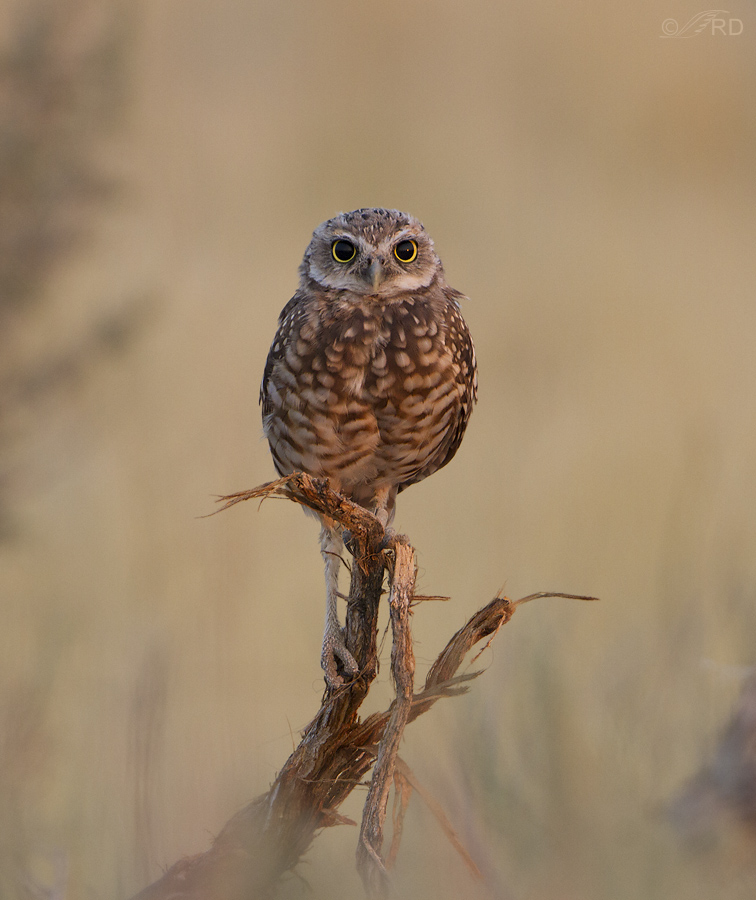
1/160, f/8, ISO 640, 500 f/4, 1.4 tc, natural light, shot from pickup window, not baited, set up or called in
I thought this image demonstrated the vulnerability of the species well. It was taken just as the sun was peeking over the mountains, when there was a warm yellow-red glow to the east which you can see in the colored catch light. These lighting conditions made the pupils of the owl huge, which contributed to the feeling of vulnerability I get from the image. The band is just visible on the left ankle.

1/2500, f/5.6, ISO 500, 500 f/4, 1.4 tc, natural light, shot from pickup window, not baited, set up or called in
But I wanted to end with an image showing strength and resilience, rather than vulnerability. To me, this bird looks determined to survive – even a little defiant against long odds. I wish it success.
I’ll admit to having some ambivalent emotions regarding the banding of wild birds. As a nature photographer, I instinctively try to avoid showing the “hand of man” in most of my images and there’s certainly nothing “natural” about a shiny aluminum or brightly colored plastic band. And there’s at least one other bird banding project in progress on the island involving a study of food chains and the effects of mercury contamination in the Great Salt Lake. This study will involve many bird species that I photograph, including Loggerhead Shrikes, one of my favorite subjects.
But logic tells me that these banding studies are necessary and serve a valid purpose. So I try to put my selfish photographer’s reactions to seeing banded birds aside and support the banding projects, which I do.
I wish both the bird researchers and the birds well.
Ron


I am so glad to find your pics again. I don’t know why, but I stopped recieving anything from you some time ago. I hope I can correct that your wonderful photos are a delight for my eyes.
These little borrowing owls are simply amazing!
Thanks!
Nice to hear from you again, Charlotte. Email subscriptions should be working fine now, but you may have to sign up again (upper right hand corner of the page).
Ron — Are you aware of programs to build artificial burrows for Burrowing Owls? http://mirror-pole.com/burr_owl/bur_owl1.htm
I think nesting burrow loss due to destruction of prairie dog towns is a big factor in Burrowing Owl decline, and this is an effort to counter that in urbanizing areas.
I understand your reservations about banding, but keep in mind that using data from properly conducted banding is one of the few ways to solidly document changes in populations. Those data are critical to protecting birds and habitat.
I greatly enjoy your work!
Laura
Thank’s, Laura. Yes, I’m aware of programs similar to this. A few artificial burrows have been placed on Antelope Island.
Those glorious eyebrows remind me of my father – who could plait his.
I more than suspect human activity in the endangerment of this, and so many other species. I wish the researchers and the owls well – but my first wish is for the owls and than the researcher. (Tree hugging leftie emerges again.)
A Utah hug for the Aussie tree hugger, Elephant’s Child. I’m one of those too, proudly.
Nice work, Ron! Your last photo shows the dimension of the Burrowing Owl’s fuzzy white eyebrows, a detail that can’t be seen head on. Delightful! I wish them and you all the best!
Hey Mikal, I guess I’d never paid much attention to those eyebrows before but you’re absolutely right. They seem to be part of the facial disk. Thanks for pointing that out.